T2 Corporation Income Tax Return stands mandatory for every resident corporation in Canada – from multi-million-dollar enterprises to businesses without any revenue this year.
The standard T2 return spans 8 pages, while eligible businesses may opt for a condensed 2-page version. Your corporation must submit this crucial document within six months after your fiscal year concludes. The tax landscape shifts in 2023, mandating electronic filing for most corporations under new regulatory requirements.
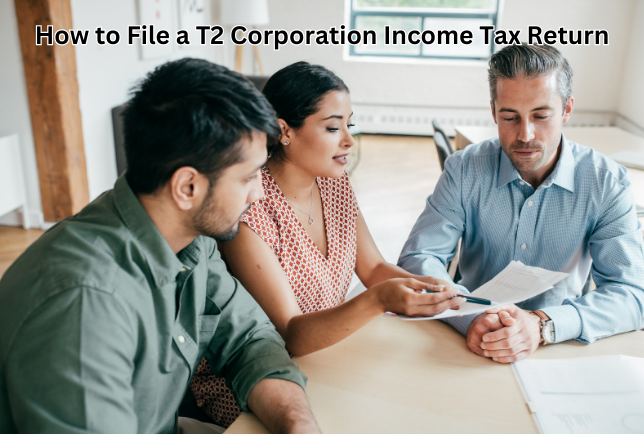
Corporate tax filing presents unique challenges to business owners. This authoritative T2 guide addresses each critical element of the process, detailing document preparation through final submission. Our expert insights will streamline your corporate tax filing experience while ensuring full compliance with CRA requirements.
Understanding the T2 Corporate Tax Return
T2 Corporation Income Tax Return represents the cornerstone document for corporate tax reporting across federal, provincial, and territorial jurisdictions in Canada. Corporate entities encounter two distinct filing options: the standard nine-page return accommodating all corporate structures, and the streamlined two-page T2 Short Return tailored for specific scenarios.
What is a T2 return?
T2 returns embody the official mechanism for corporate income declaration, enabling Canadian corporations to report earnings and determine their tax liabilities. Corporations reporting zero fiscal activity qualify for the T2 Short Return (T2SHORT), commonly referenced as a Nil Return. This abbreviated format serves Canadian-controlled private corporations specifically when they report losses or maintain zero income throughout their tax year.
Who needs to file?
T2 filing obligations encompass diverse organizational structures:
- All resident corporations
- Non-profit organizations
- Tax-exempt corporations
- Inactive corporations
- Non-resident corporations meeting specific criteria
Non-resident corporations face T2 filing requirements when conducting Canadian business operations, realizing taxable capital gains, or disposing of taxable Canadian property. These obligations persist regardless of treaty-based tax exemption claims.
Specific scenarios trigger T2 filing mandates for non-resident corporations, particularly following Form NR6 submissions for real property rental income or Form T1288 for acting service revenues. Non-resident entities might elect voluntary filing when pursuing refunds or opting to pay Part I tax on designated income categories.
The tax code carves out specific exemptions from these filing requirements. Tax-exempt Crown corporations, Hutterite colonies, and organizations maintaining registered charity status throughout the tax year receive filing exemptions.
BOMCAS Canada stands ready as your expert Business Tax Accountants, offering precise guidance through the T2 Corporation Income Tax Return process. Our technical expertise ensures meticulous attention to regulatory compliance while safeguarding your corporate tax interests.
Getting Ready to File
T2 Corporation Income Tax Return demands precise document organization and strict deadline adherence. BOMCAS Canada provides expert guidance throughout this critical preparation stage.
Required Documents
Successful T2 filing rests upon meticulous documentation. Essential materials fall into three distinct categories:
- Corporation identification materials
- Federal Business Number
- Date and certificate of incorporation
- Legal name and corporate tax account numbers
- Articles of incorporation
- Financial records
- Complete year-end financial statements
- Bank statements for the last month of taxation year
- GST/HST reports filed for the year
- Detailed payroll records with deduction remittances
- Previous year’s T2 returns and Notice of Assessment
- Shareholder information
- Names and addresses of all shareholders
- Social Insurance Numbers for individual shareholders
- Business numbers for corporate shareholders
- Share ownership details and classifications
Important Deadlines
T2 filing schedules align precisely with your corporation’s fiscal period. Corporations ending their tax year on a month’s final day must file by the last day of the sixth subsequent month. Tax years concluding on other dates require filing on the corresponding day of the sixth following month.
Key deadline examples illustrate this structure:
- March 31st fiscal year-end → September 30th filing deadline
- August 31st fiscal year-end → February 28th filing deadline
- September 23rd fiscal year-end → March 23rd filing deadline
Corporate record retention spans 6 years. Current regulations mandate electronic filing for corporations exceeding CAD 1.39 million in annual gross revenue. This landscape shifts after 2023, when electronic filing becomes standard practice for most corporations.
Payment schedules grant corporations two months post-tax-year-end for balance settlement. Canadian-Controlled Private Corporations might secure three-month payment terms under specific provisions.
Late submissions trigger penalties. Tax refund claims demand filing within three years of the tax year’s conclusion. CRA recognizes submissions as timely when received or postmarked by the next business day following weekend or holiday deadlines.
Choosing Your Filing Method
T2 Corporation Income Tax Return submission methods reflect significant technological advancement, with electronic filing now commanding 90% of corporate submissions. BOMCAS Canada offers expert guidance through both digital and traditional filing pathways.
Electronic filing options
CRA-certified software forms the backbone of electronic submission protocols. Three distinct channels facilitate this digital framework:
- CRA’s Corporation Internet Filing service
- My Business Account (for business owners)
- Represent a Client (for authorized representatives)
T2 Auto-fill technology enhances filing efficiency through automated data migration from CRA systems to certified preparation software. The T2 Attach-a-doc protocol enables supplementary document transmission within 24 hours post-filing.
Current regulations mandate electronic submission for corporations exceeding CAD 1.39 million in annual gross revenue. This regulatory framework expands post-2023, establishing mandatory internet filing across most corporate entities. Tax professionals risk penalties when paper submissions exceed five T2 returns.
Digital submission yields strategic advantages:
- Immediate confirmation of receipt
- Faster processing and refunds
- Reduced mailing costs
- Environmental benefits through paper reduction
Paper filing process
Traditional filing pathways remain accessible through T2 Bar Code Returns. These specialized returns encompass corporate identification data, financial summaries, and mandatory certification components.
Paper submission protocols demand:
- T2 Bar Code Return generation via CRA-certified software
- Comprehensive information verification
- Submission to jurisdiction-specific tax centers
Paper documentation requires clear identification markers:
- Corporate name
- Business number
- Applicable tax year-end
CRA protocols explicitly exclude faxed submissions. Non-resident corporations must direct paper returns to the Sudbury Tax Center.
BOMCAS Canada’s technical expertise ensures precise alignment with CRA submission requirements across all filing methodologies.
Completing the Basic Information Section
Basic information accuracy determines the foundation of your T2 Corporation Income Tax Return. BOMCAS Canada delivers precise guidance through these fundamental elements that shape your return’s processing pathway.
Corporation details
Your corporation’s Business Number (BN) comprises 15 characters: nine digits identifying your business, followed by ‘RC’ denoting the income tax program, and four program identifier digits. Standard protocol dictates using ‘0001’ as your program identifier barring specific CRA directives.
Corporate address documentation demands three precise entries:
- Head office location – primary business address
- Mailing address – where you receive CRA correspondence
- Books and records location – where financial documents are stored
Address modifications require explicit notification through change indicator boxes. Mailing address updates proceed through My Business Account or direct tax center correspondence.
Tax year specifications
Tax year parameters mirror your fiscal period, establishing critical filing timelines. First-year corporations face a 53-week maximum period from incorporation date.
Temporal documentation follows strict protocols:
- 24-hour clock format implementation
- Day commencement: 00:00
- Day conclusion: 23:59 (11:59 pm)
Specific scenarios demand precise hour and minute documentation:
- Acquisition of control situations
- Canadian-controlled private corporation status alterations
- Post-amalgamation first year
- Pre-amalgamation final year
Financial statements and General Index of Financial Information (GIFI) must exhibit perfect alignment with declared tax periods. Electronic filing becomes standard protocol for most corporations post-2023.
BOMCAS Canada’s technical mastery ensures pinpoint accuracy across these foundational elements. Our expertise prevents processing delays and assessment errors that often stem from basic information discrepancies.
Calculating Your Corporate Income
Corporate taxable income determination demands precise calculation methodologies and deep understanding of permissible deductions. BOMCAS Canada offers expert guidance through this vital component of T2 Corporation Income Tax Return filing.
Revenue reporting
Part I tax calculations begin at 38% of taxable income. Corporate revenue declarations must capture all income streams, spanning business operations, investment returns, and COVID-19 program payments. Manufacturing and processing enterprises generating minimum 10% gross revenue from Canadian operations qualify for specialized Part I tax reductions.
Schedule 1 serves as the mandatory reconciliation tool between accounting income and taxable income. This methodical adjustment protocol safeguards regulatory compliance while preserving accurate financial representation.
Allowable deductions
Tax code provisions permit deductions for income-generating business expenses, subject to specific parameters. Qualified deductions span two primary categories:
- Employee-related costs
- Salaries and wages
- Insurance and pension contributions
- Employee benefits
- Operational expenses
- Office supplies and equipment
- Telecommunications services
- Business insurance premiums
- Bank fees and loan interest
Capital Cost Allowance (CCA) rates follow precise schedules: furniture and fixtures at 20%, automotive equipment at 30%, buildings between 4% and 10%. First-year claims face 50% reduction under the ‘half-year rule’.
Meal and entertainment expenses carry 50% deduction limits, while charitable donation deductions typically cap at 75% of net income. Interest expenses qualify when borrowed capital directly supports income generation.
Financial statement requirements
General Index of Financial Information (GIFI) mandates comprehensive financial documentation. Three core schedules establish reporting foundations:
- Schedule 100: Balance sheet information
- Schedule 125: Income statement information
- Schedule 141: Notes checklist
Electronic filing requirements apply to corporations exceeding CAD 1.39 million in annual gross revenue. Business activities might necessitate supplementary schedules – Schedule 8 for Capital Cost Allowance calculations, Schedule 6 for capital property dispositions.
Corporate record retention protocols demand six-year preservation of business documentation. BOMCAS Canada’s technical expertise ensures precise income calculations while optimizing legitimate deduction opportunities within current tax regulations.
Filing Required Schedules
T2 Corporation Income Tax Return completion demands meticulous attention to schedule requirements. BOMCAS Canada provides technical expertise across these critical tax reporting components.
Mandatory schedules
T2 returns mandate specific foundational schedules. Three core documents establish financial reporting standards:
- Schedule 100: Balance Sheet Information
- Schedule 125: Income Statement Information
- Schedule 141: Notes Checklist
General Index of Financial Information (GIFI) protocols standardize financial documentation across corporate entities. Schedule 1 functions as the principal reconciliation mechanism, translating accounting figures into taxable income parameters.
Corporate shareholding structures exceeding 10% ownership thresholds trigger Schedule 50 filing requirements. Asset depreciation calculations find expression through Schedule 8, detailing Capital Cost Allowance rates across prescribed asset classifications.
Optional schedules based on business type
Business operations dictate supplementary schedule requirements. Key operational scenarios demand specific documentation:
- Capital transactions: Schedule 6 captures property disposition outcomes
- Investment activities:
- Schedule 7 delineates investment versus active business income
- Schedule 3 addresses dividend computations and Part IV tax obligations
- Business relationships:
- Schedule 9 documents related and associated corporate structures
- Schedule 11 records shareholder, officer, and employee transactions
Scientific research enterprises require Schedule 49 for expenditure classification. Non-resident corporate entities must complete Schedule 97, detailing Canadian operational parameters.
Multi-provincial operations necessitate Schedule 5 for revenue attribution. Industry-specific protocols mandate specialized documentation:
- Schedule 12 addresses resource sector deductions
- Schedule 16 covers patronage dividend calculations
- Schedule 17 specifies credit union allowances
T2 Attach-a-doc service offers 24-hour supplementary documentation windows post-filing. BOMCAS Canada’s technical mastery ensures precise schedule completion, optimizing tax benefits while maintaining stringent compliance standards.
Submitting Your T2 Return
T2 Corporation Income Tax Return submission protocols demand precise execution of filing and payment procedures. BOMCAS Canada delivers expert guidance through these final critical phases.
Final checklist
CRA’s T2 Pre-Validation service enables preliminary verification of filing data. This technical protocol identifies potential submission barriers while providing remediation pathways. Service access requires EFILE credentials or corporate Web Access Code authentication.
Submission verification demands multi-channel confirmation:
- Tax profile confirmation number validation
- Tax preparation service electronic acknowledgment
- CRA My Account status monitoring
Electronic submissions mandate Form T183 CORP completion and retention per tax year. CRA processing culminates in Notice of Assessment issuance, specifying required actions or refund determinations.
Payment options
Corporate tax remittance follows structured protocols. Tax obligations require installment payments throughout the year, concluding with final balance settlement two or three months post-tax-year.
Tax obligations exceeding CAD 4,180.08 trigger mandatory monthly installment requirements. Canadian-controlled private corporations with taxable income below CAD 696,680.10 might qualify for quarterly remittance schedules.
Payment mechanisms encompass:
- Online Banking
- Tax filing service registration
- Federal Corporation Income Tax designation
- Nine-digit business number with RC0001 entry
- Advanced payment scheduling capabilities
- CRA My Payment
- Visa Debit card requirement
- 11:15 pm ET transaction cutoff
- Pre-deadline modification window until 11:59 pm ET
- In-Person Banking
- Original Notice of Assessment presentation
- Remittance voucher submission
- Canadian financial institution processing
- Mail Payment
- Business number cheque annotation
- Payment period specification
- Tax center-specific routing
Provincial tax obligations require separate procedural adherence. Payment receipt date, rather than mailing date, determines interest calculations.
BOMCAS Canada emphasizes punctual remittance protocols to prevent penalty assessments. Six-year document retention standards apply to payment records.
Future-dated transactions undergo overnight processing cycles. Payment history remains retrievable through banking platforms for 13 months. BOMCAS Canada’s technical expertise ensures precise alignment between submission protocols and CRA requirements while maintaining robust documentation standards.
Handling Common Filing Issues
T2 Corporation Income Tax Return complications demand swift resolution protocols. BOMCAS Canada delivers technical expertise across error correction and amendment pathways.
Error correction process
CRA’s T2 Pre-Validation service functions as your first defense against filing errors. This technical safeguard scrutinizes submission data while providing precise correction protocols. Three distinct error categories emerge:
- Information mismatches between corporate records and CRA data
- Technical submission problems with electronic filing
- Specific error codes requiring targeted resolution
Error prevention outweighs correction efforts. While CRA’s Corporation Internet Filing Helpdesk (1-800-959-2803) stands ready to assist, proactive error identification minimizes processing delays.
T2 Adjustment Worksheet serves as the formal CRA notification mechanism for electronic filing corrections. Commercial tax software packages offer built-in validation capabilities, enabling preliminary error detection.
Essential validation elements encompass:
- Corporation name accuracy
- Business number verification
- Tax year specifications
- Financial statement consistency
Amendment procedures
Notice of Assessment receipt opens amendment pathways. Amendment windows vary by corporate structure:
- Canadian-controlled private corporations: Three years
- Other corporations: Four years
Amendment protocols follow two distinct paths:
Electronic Amendment Process:
- Use current commercial tax software
- Complete T2 Adjustment Worksheet
- Submit revised return electronically
Paper Amendment Process:
- Write to your tax center
- Include corporation’s business number
- Specify tax year
- Attach supporting documentation
Loss carryback and tax credit modifications require specific schedules:
- Schedule 4: Corporation Loss Continuity and Application
- Schedule 21: Foreign Income Tax Credits
- Schedule 31: Investment Tax Credit
- Schedule 42: Part I Tax Credit calculations
CRA amendment review protocols culminate in reassessment notices detailing approved changes. Declined requests receive written explanations outlining rejection rationale.
Complex disputes might necessitate formal objection procedures. These objections establish initial resolution pathways when corporations identify fact misinterpretation or incorrect tax law application.
BOMCAS Canada’s technical mastery ensures precise navigation through error correction and amendment protocols. Our deep understanding of CRA requirements delivers optimal resolution outcomes while maintaining stringent compliance standards.
Conclusion
T2 Corporation Income Tax Return mastery demands precision, technical expertise, and deep understanding of CRA protocols. This authoritative guide illuminates critical elements across the filing spectrum – from foundational documentation requirements through final submission procedures.
T2 filing excellence rests upon multiple pillars: stringent deadline adherence, meticulous record maintenance, precise income calculations, and accurate schedule submissions. Traditional paper-based systems yield to digital protocols, marking 2023 as a pivotal year for corporate tax filing evolution.
BOMCAS Canada stands at the forefront of T2 Corporation Income Tax Return expertise. Our technical mastery transforms complex filing requirements into streamlined processes, optimizing tax benefits while ensuring unwavering regulatory compliance.
Success markers for T2 filing encompass:
- Six-month post-fiscal-year submission windows
- Six-year business record retention protocols
- CRA-certified software implementation
- Precise mandatory schedule completion
- Swift error resolution procedures
BOMCAS Canada’s Business Tax Accountants deliver unmatched technical precision and regulatory expertise. Your corporate tax obligations become our mission, enabling your focused pursuit of business growth objectives.
FAQs
Q1. Is it necessary to hire an accountant for filing a T2 Corporation Income Tax Return? While it’s not mandatory, hiring an accountant is generally recommended, especially for complex business structures. An accountant can ensure accurate completion of the form and help maximize available tax benefits.
Q2. Can business owners file their own corporate tax return in Canada? Yes, business owners can prepare and file their own corporate income tax return. However, it’s important to have a thorough understanding of tax regulations and filing requirements to ensure compliance.
Q3. What exactly is a T2 Corporation Income Tax Return? The T2 Corporation Income Tax Return is the primary form used by corporations in Canada to report their income and calculate their tax obligations. All corporations, except registered charities, must file this return annually, regardless of whether they owe taxes.
Q4. How should a corporation file a T2 return if it had no income? Even with no income, corporations must file a T2 return. This is often referred to as a “nil return” or T2 Short Return. The process involves reporting zero income and expenses while still providing basic corporate information.
Q5. What are the key deadlines for filing a T2 Corporation Income Tax Return? The filing deadline for a T2 return is typically six months after the corporation’s fiscal year-end. For corporations with a tax year ending on the last day of a month, the deadline is the last day of the sixth month following the year-end. If the year-end falls on any other day, the deadline is that same day in the sixth month after the year-end.





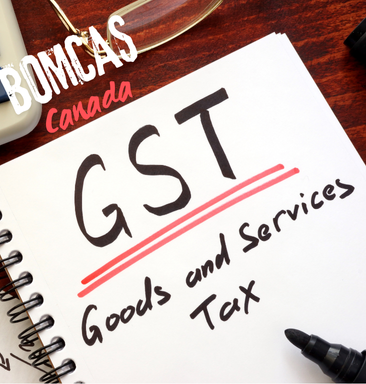
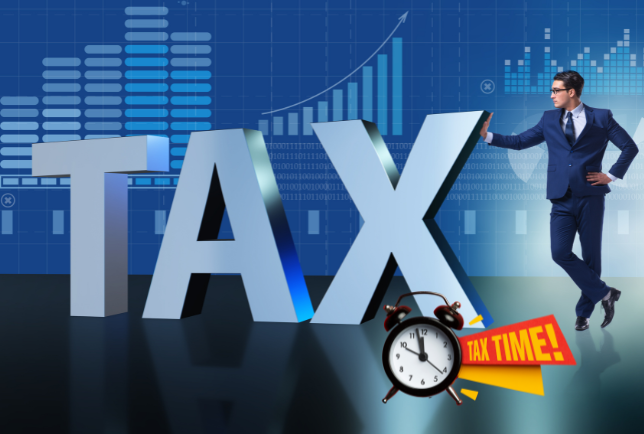



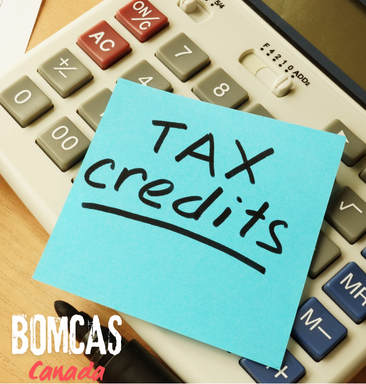
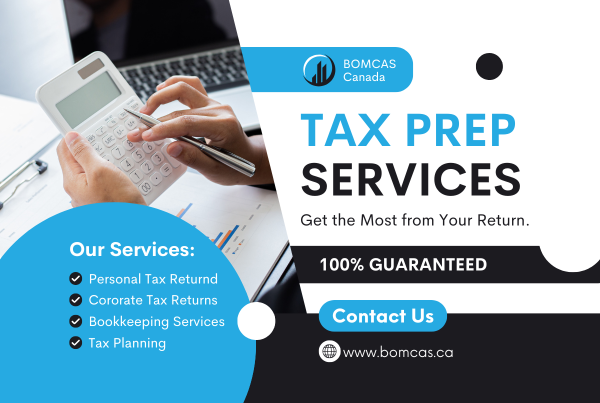




 View Our Location
View Our Location





 181 Meadowview Bay, Sherwood Park, AB T8H 1P7, Canada (Online Clients Only)
181 Meadowview Bay, Sherwood Park, AB T8H 1P7, Canada (Online Clients Only)